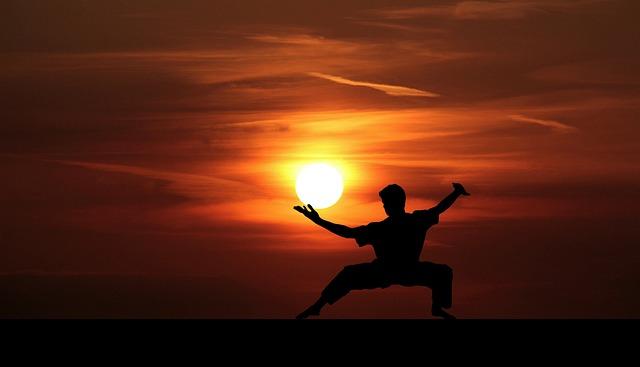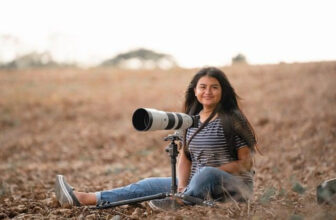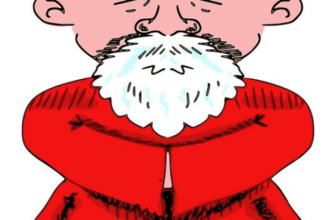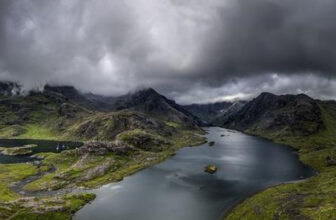Mastering the Art of Smoke Photography
GoogleAds

Smoke photography is a captivating art form that requires patience, precision, and a keen eye for detail. From capturing the graceful swirls of smoke on camera to manipulating light and composition, mastering the art of smoke photography is a skill that can truly elevate your photography skills. In this article, we will explore the techniques and tips for capturing stunning smoke images, allowing you to unlock the beauty and mystery of this ethereal subject.
Introduction
Capturing the beauty of smoke through photography is a mesmerizing art form that requires skill, patience, and creativity. As smoke gracefully dances and swirls in the air, the camera lens becomes the artist’s tool to freeze these ephemeral moments in time. Mastering smoke photography involves understanding the behavior of smoke, manipulating lighting, and experimenting with various techniques to achieve stunning visual effects.
Smoke photography offers a unique opportunity for photographers to explore the abstract and surreal aspects of the world around us. By focusing on the shapes, textures, and colors created by smoke, photographers can create striking and evocative images that challenge the viewer’s perception and imagination. Whether capturing wispy tendrils or billowing clouds of smoke, each photograph tells a story and sparks the viewer’s curiosity.
One of the key challenges in smoke photography is controlling the movement and shape of the smoke itself. The slightest breeze or air current can dramatically alter the appearance of the smoke, requiring photographers to be patient and adaptable. By using tools such as fans, incense sticks, or smoke machines, photographers can manipulate the direction and density of the smoke to achieve the desired visual effects.
Lighting plays a crucial role in smoke photography, as it can enhance the textures and colors of the smoke to create depth and drama in the image. By experimenting with different lighting setups, such as side lighting, backlighting, or colored gels, photographers can add a touch of magic to their smoke photos. The interplay between light and shadow highlights the intricate details of the smoke, transforming a simple subject into a work of art.
In this guide, we will delve into the world of smoke photography and explore the techniques, equipment, and creative strategies that can help you master this captivating art form. Whether you are a beginner looking to learn the basics or a seasoned photographer seeking new inspiration, this guide will provide you with the knowledge and skills to take your smoke photography to the next level. Get ready to unleash your creativity and capture the beauty of smoke like never before.
Choosing the Right Equipment
When it comes to smoke photography, having the right equipment can make all the difference in capturing stunning images. Here are some key factors to consider when choosing the right gear:
Camera: A DSLR or mirrorless camera with manual settings is ideal for smoke photography. These cameras allow you to adjust the aperture, shutter speed, and ISO to get the perfect shot.
Lens: A macro lens is great for capturing intricate details in the smoke patterns. A telephoto lens can also be useful for capturing smoke from a distance.
Tripod: To ensure sharp, clear images, a sturdy tripod is essential. This will help prevent camera shake and allow you to experiment with longer exposure times.
Remote Shutter Release: Using a remote shutter release or timer can help minimize vibrations when capturing photos, especially when using longer exposure times.

Setting the Scene
Creating stunning smoke photography requires more than just snapping a picture. It involves careful planning, creativity, and the right set-up to capture the perfect shot. is a crucial step in mastering this art form, as it sets the tone and mood for your final image.
One key element in for smoke photography is selecting the right background. A plain, dark backdrop works best to highlight the swirling patterns and shapes of the smoke. This will help the smoke stand out and create a more impactful image.
Another important factor to consider is lighting. Soft, diffused lighting is ideal for smoke photography as it helps to bring out the details and textures in the smoke. Avoid harsh or direct lighting, as it can create unwanted shadows and detract from the overall effect.
When setting up your shot, consider the composition and framing of your image. Experiment with different angles and perspectives to find the most visually striking arrangement. Don’t be afraid to play around with the placement of the smoke within the frame to create a more dynamic and interesting shot.
Finally, don’t forget about post-processing. Editing software can help enhance the colors, contrast, and overall look of your smoke photography. Take the time to fine-tune your images to achieve the desired effect and make them truly stand out.

Mastering Lighting Techniques
Smoke photography is a captivating form of art that can truly elevate your photography skills to the next level. Mastering the art of capturing smoke requires precision, creativity, and a deep understanding of lighting techniques. In this post, we will explore some tips and tricks to help you master the art of smoke photography.
First and foremost, lighting plays a crucial role in smoke photography. The way light interacts with smoke can create stunning visual effects, so it’s important to experiment with different lighting setups. Try using a single light source from various angles to see how it affects the smoke patterns. You can also use colored gels to add a unique touch to your images.
Another important aspect to consider when capturing smoke is the background. A clean and simple background will help the smoke patterns stand out and be the focal point of your images. Consider using a black or white backdrop to create a striking contrast with the smoke. You can also experiment with different textures and patterns for added visual interest.
When it comes to camera settings, a fast shutter speed is essential to freeze the motion of the smoke. Start with a shutter speed of around 1/200th of a second and adjust as needed based on the speed of the smoke particles. A wide aperture will help create a shallow depth of field, putting the focus on the intricate details of the smoke.
Lastly, don’t be afraid to get creative with your compositions. Experiment with different angles, perspectives, and framing to create visually compelling images. Think outside the box and challenge yourself to capture the beauty and complexity of smoke in new and innovative ways. With practice and patience, you’ll be able to master the art of smoke photography and create stunning visual masterpieces.

Perfecting Composition
Understanding the Basics
Before diving into the world of smoke photography, it is crucial to grasp the fundamental principles of composition. Pay close attention to the placement of your subject within the frame and how it interacts with the surrounding elements. Experiment with different angles, perspectives, and lighting to create visually captivating images.
Use the rule of thirds to create balanced and dynamic compositions. By dividing your frame into thirds both horizontally and vertically, you can place your subject at the intersections of these lines to create a more visually appealing image.
Playing with Light and Shadow
Lighting plays a crucial role in smoke photography, as it can dramatically affect the mood and atmosphere of your images. Experiment with different lighting setups, such as side lighting or backlighting, to create unique silhouettes and patterns within the smoke.
Take advantage of shadows to add depth and dimension to your compositions. By positioning your light source at different angles, you can create dramatic shadows that enhance the overall aesthetic of your images.
Experimenting with Color and Texture
Don’t be afraid to get creative with color and texture in your smoke photography. Consider using colored gels or filters on your light source to add vibrant hues to your images. Experiment with different backgrounds and props to introduce interesting textures and patterns into your compositions.
Use editing software to enhance the colors and textures in your images. Adjust the saturation, contrast, and white balance to make your smoke photos pop and stand out from the crowd.
Capturing Movement and Emotion
Smoke photography presents a unique opportunity to capture movement and emotion in your images. Experiment with different shutter speeds to freeze or blur the motion of the smoke, creating dynamic and captivating visuals.
Focus on capturing the emotion and atmosphere of the scene. Whether you’re aiming for a serene and contemplative mood or a bold and dramatic aesthetic, use composition techniques to evoke the desired feelings in your audience.
Mastering the Art of Smoke Photography
By mastering the basics of composition and experimenting with light, color, and texture, you can truly elevate your smoke photography to the next level. Remember to practice, explore new ideas, and push the boundaries of your creativity to create stunning and captivating images that leave a lasting impression on your viewers.

Experimenting with Different Smoke Sources
When it comes to capturing mesmerizing smoke photography, the source of smoke plays a crucial role in determining the outcome. As a photography enthusiast, can enhance your skills and create stunning visual effects in your images.
One of the most common smoke sources used in photography is incense sticks. These sticks produce a steady stream of smoke, perfect for capturing delicate swirls and patterns. The slow-burning nature of incense sticks allows you to have more control over the direction and density of the smoke, resulting in beautiful and intricate designs in your photographs.
Another interesting smoke source to explore is dry ice. When placed in water, dry ice produces a thick, fog-like smoke that can add a mysterious and ethereal quality to your images. The billowing clouds of smoke created by dry ice can create a sense of movement and drama in your photos, making them truly captivating to the viewer.
For a more colorful and vibrant effect, try using colored smoke bombs as your smoke source. These bombs come in a variety of hues, allowing you to experiment with different color schemes and create striking visual contrasts in your photographs. The vivid colors of the smoke bombs can add an element of excitement and energy to your images, making them stand out from the crowd.
Regardless of the smoke source you choose to experiment with, remember to pay attention to lighting and composition to truly master the art of smoke photography. By carefully selecting your smoke source and manipulating it to suit your creative vision, you can create stunning and evocative images that leave a lasting impression on your audience.

Post-Processing Tips for Stunning Results
Capturing stunning smoke photography images can be a challenging yet rewarding experience. Mastering the art of smoke photography requires not only a keen eye for composition and lighting but also post-processing skills to enhance the final results. In this post, we will share some expert tips on post-processing techniques that will take your smoke photography to the next level.
1. Adjust Levels and Curves: One of the most important aspects of post-processing smoke photography is adjusting levels and curves. By fine-tuning the contrast and brightness levels, you can bring out the intricate details of the smoke and create a more dynamic and visually appealing image.
2. Experiment with Colors: Smoke photography offers a unique opportunity to play with colors and create mesmerizing visual effects. Use hue and saturation adjustments to experiment with different color schemes and create a captivating atmosphere in your images.
3. Apply Filters and Effects: Adding filters and effects can dramatically enhance the mood and tone of your smoke photography. Experiment with blur effects, vignettes, and overlays to add a touch of creativity and uniqueness to your images.
4. Use Photoshop Brushes: Photoshop brushes are a powerful tool for adding intricate details and textures to your smoke photography. Experiment with different brush shapes and sizes to create stunning visual effects and make your images stand out.
Q&A
Q: What equipment do you need to begin smoke photography?
A: To start smoke photography, you will need a camera (preferably a DSLR), a tripod, a flashgun, and an incense stick or other source of smoke.
Q: How can you capture clear and defined smoke patterns?
A: To capture clear and defined smoke patterns, it is important to use a dark background, set your camera to manual focus, and experiment with different lighting angles to enhance the smoke.
Q: What settings should I use on my camera for smoke photography?
A: For smoke photography, it is recommended to use a narrow aperture (f/8 or higher), a slow shutter speed (around 1/200 or slower), and a low ISO to minimize noise in the image.
Q: How can I manipulate the smoke to create interesting shapes and patterns?
A: To manipulate the smoke and create interesting shapes and patterns, you can use a fan to control the direction of the smoke, or use different colored gels on your flash to add depth and dimension to the image.
Q: Are there any post-processing techniques I should use to enhance my smoke photography?
A: In post-processing, you can adjust the contrast, brightness, and saturation of the image to bring out the details in the smoke, as well as use tools like cloning and masking to remove any unwanted distractions.
Closing Remarks
In conclusion, mastering the art of smoke photography takes time, patience, and a keen eye for detail. By understanding the principles behind capturing and manipulating smoke, photographers can create stunning and captivating images that truly stand out. Whether you’re a beginner or an experienced photographer, experimenting with smoke photography can open up a world of creative possibilities. So grab your camera, set up your studio, and let the smoke dance before your lens. Happy shooting!
GoogleAds







